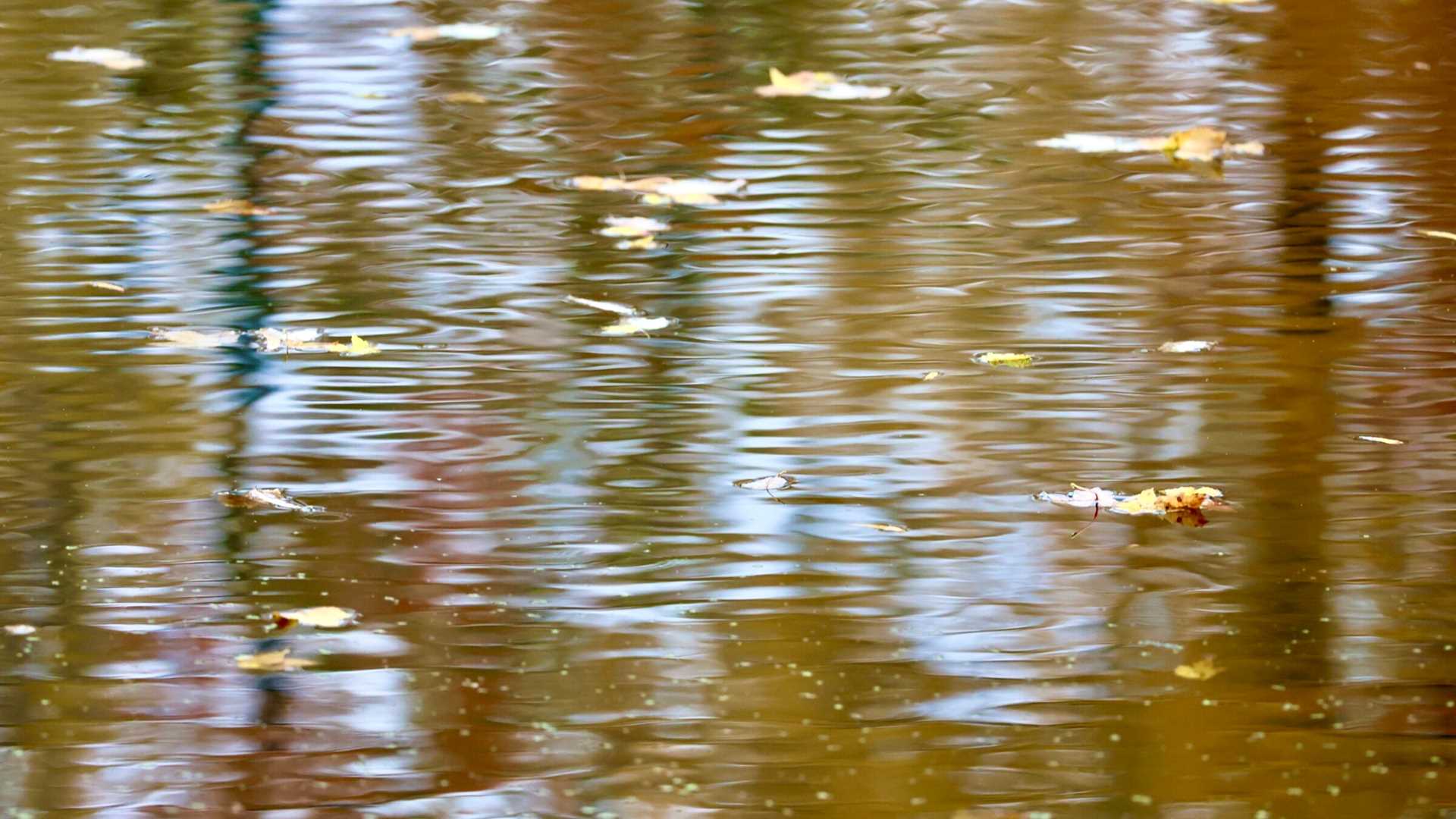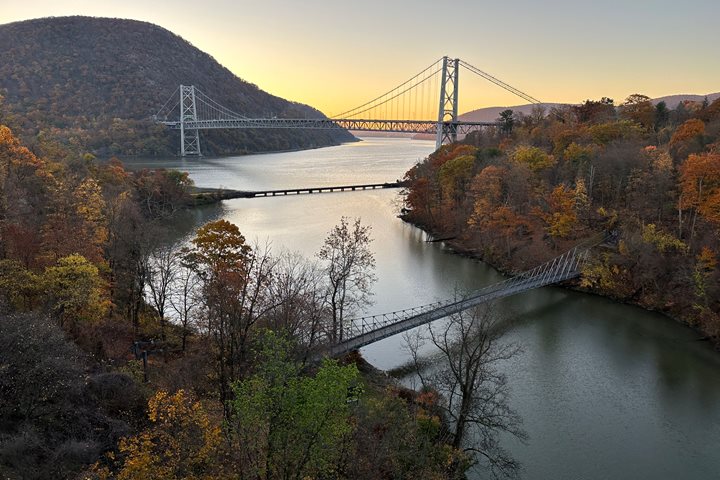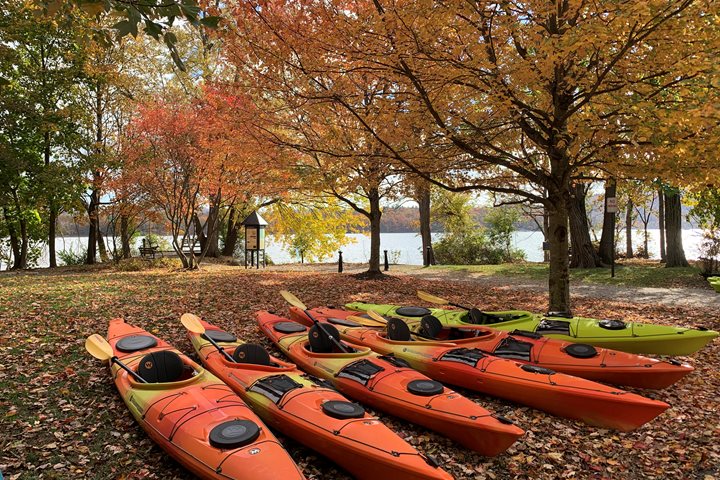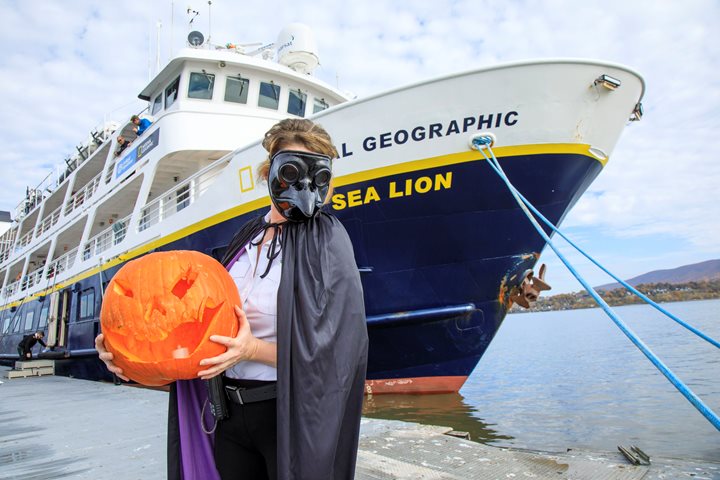One of the central tenets of National Geographic Sea Lion’s voyage up the Hudson River is transformation. From the first light of dawn, this theme was evident. Beneath gray skies, autumn colors grow richer by the day, signaling the climax of autumn approaching and the warm days ending. Soft rains drenched the landscape and our raincoats, a welcome change from the relative heat of the last few days. It is days like this that those of us who hail from the Northeast dream about in the depths of winter and the swelters of summer.
Our first land operation of the day was a visit to the grounds of Storm King Art Center. A 500-acre paradise of sculpture and autumn colors, each of us charted our own course along the grounds. I found myself particularly impressed with the works of Kenyan artist Wangechi Mutu, whose Afrofuturistic style proved a stark contrast to the painters of the Hudson Valley School, with whom we have become intimately acquainted. This place has been transformed countless times over the course of the centuries: glaciated and thawed, stewarded by different peoples, and home to an ever-changing array of life.
Following lunch, we hiked to the ruins of the Cornish Estate. Once again, our theme rang loud and clear. Before our very eyes, we saw the reclamation of construction materials by nature.
But perhaps the highlight of our day was our visit to Glynwood Farm. A not-for-profit organization, the good folks at Glynwood are helping to usher in change in the Hudson Valley. Training apprentice farmers, restoring land that has fallen into disrepair, and nourishing a community are at the heart of their mission. Following a tour of their farm and a lesson in foraging the Hudson Valley, we were treated to a five-course farm-to-table meal. Paired with wines both local and international, each plate prompted deep thought and satisfaction.
As we board National Geographic Sea Lion and the river rocks us into sleep, we will dream of cozy autumn days like this.







